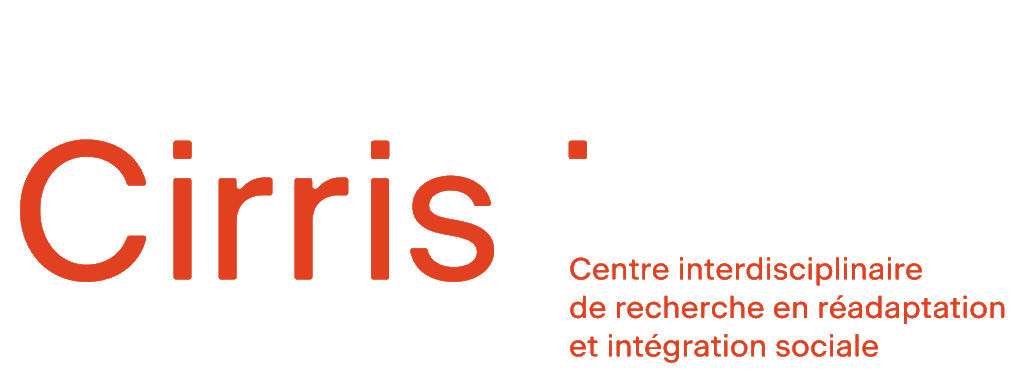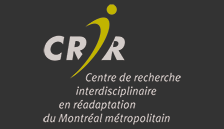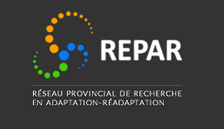How can we ensure that knowledge translation is completed successfully ?
Rebecca Ataman, PhD candidate, McGill university
This vidéo outlines the elements of a successful transfer of knowledge. Monitoring process and evaluating results are the main elements presented here.
Subtitles available
LSQ Version - Quebec sign language
References
Text content
My name is Rebecca Ataman. I’m a registered kinesiologist and PhD candidate in the School of Physical and Occupational Therapy at McGill University. In this video, we will discuss how to know and help ensure that your knowledge translation process was successful. In other words, did you meet the knowledge translation goals you established and achieved the impact that you wanted to with the knowledge that you have shared? To find out, you should monitor knowledge and evaluate outcomes, as recommended by the Knowledge To Action framework. Monitoring knowledge over time and at regular intervals can encourage the continued use of that knowledge by signaling its importance by keeping your focus on it. Furthermore, ongoing monitoring will allow you to see when something isn’t working. This information can help you adapt the knowledge or new practice or the knowledge translation strategies that you are using to address the problem. In either case, continued monitoring can be used to help ensure the knowledge translation process is meeting the intended targets or goals, on an ongoing basis. Evaluating outcomes is about considering the impact of the knowledge you have moved into practice. For example, has it affected the audience the way that you thought it would, or has the knowledge resulted in changes that you were hoping for? It is important that you consider ways to measure the effects of your knowledge translation project. Not only monitor the translation of the knowledge itself. Evaluating outcomes can be particularly challenging. So although monitoring knowledge is an important piece of ensuring knowledge translation is successful, we will focus on outcome evaluation for the rest of this video. So how do we evaluate outcomes? To start, this requires us to consider who, how, when, and what outcomes will be evaluated? Who refers to the person or people responsible for the evaluation process? Who will collect the information, analyze it, and share it with appropriate individuals? How refers the evaluation strategies or processes you might put in place when refers to the timing of evaluation. Finally, what refers to the outcome itself? Choosing the right outcomes to measure is essential for the information you are collecting to be meaningful. Who, how, and when can vary widely between projects and the best practice here is to choose an option that will make the most sense given the people you have on your knowledge translation team, the resources available to you, and the time you think it will take to see outcomes. In contrast, there is a considerable amount of guidance considering what outcomes should be evaluated across any kind of knowledge translation project. We will quickly introduce you to one of the most popular of these evaluation frameworks: RE-AIM. RE-AIM stands for Reach, Effectiveness, Adoption, Implementation and Maintenance. RE-AIM or other implementation frameworks list different types of outcomes that may be important for you to consider measuring. So, for example, RE-AIMe suggests that measuring reach is important. This could mean that you measure the number of people, sites, or regions that you shared new knowledge with, or perhaps the number of people impacted in a certain way by the knowledge. It is up to you to determine exactly how to measure the outcome that RE-AIM suggests so that it’s most relevant to you. But what does it mean for an outcome to be relevant? Well, it means that an outcome resonates with as many stakeholders as possible. It is unlikely that every measured outcome will be relevant to everybody. What a clinician is most interested in not necessarily what patients are most interested in. Collaboratively identifying a feasible set of outcomes to evaluate can help create and maintain by a knowledge translation project in addition to continuing to check that the new knowledge is successfully integrated into practice, such as having the expected impact. Once relevant outcomes and how they will be measured are identified, it’s a good idea to determine in advance what an adequate result would be. For example, is your goal to reach 100 people with the knowledge that you are sharing. As with determining outcomes and how to measure them collaboratively, determining targets is ideal. This should be done with the understanding that a goal of 100% is usually unachievable for good reasons. If there are only 100 people in an organization then reaching all 100 people is probably not possible or desired. Some will be on vacation or on leave while others might be in positions in which the knowledge you are sharing is irrelevant. Setting realistic targets is necessary to be able to determine if knowledge translation was achieved successfully or if further work needs to be done. To conclude this video, we would like to note that figuring out a strategy for knowledge monitoring and outcome evaluation is something that should be done early on in the knowledge translation process. Leaving this planning process until after the knowledge has been shared is not ideal. You’ll want time and need time to collaboratively work through this important step.




